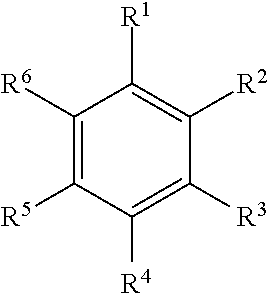Encapsulated particle
a technology of encapsulated particles and granular particles, which is applied in the field of encapsulated particles, can solve the problems of waste and phytotoxicity, limit the dissolution rate rapid dissolution of core particles into soil, so as to improve flexibility and durability, improve moisture barrier properties, and improve compatibility
- Summary
- Abstract
- Description
- Claims
- Application Information
AI Technical Summary
Benefits of technology
Problems solved by technology
Method used
Image
Examples
examples
[0076]Three polyurethanes are prepared by mixing their respective components together in beakers. The reactants used to form each of the three polyurethanes are provided below in TABLE 1. Composition A includes the aromatic isocyanate component, the polyol derived from the aromatic amine-based initiator, and the aliphatic polyether polyol, in accordance with one embodiment of the inventive composition. Composition B is a comparative example that includes the aromatic isocyanate component and the polyol derived from the aromatic amine-based initiator, but lacks the aliphatic polyether polyol. Composition C is a comparative example that includes the aromatic isocyanate component and the aliphatic polyether polyol, but lacks the polyol derived from the aromatic amine-based polyether polyol.
TABLE 1PolyurethanesComposition AComposition BComposition C(Inventive(Comparative(ComparativeComposition)Composition)Composition)3.65 g Isocyanate A5 g Isocyanate A1.26 g Isocyanate A3.18 g Polyol A5...
PUM
| Property | Measurement | Unit |
|---|---|---|
| Temperature | aaaaa | aaaaa |
| Temperature | aaaaa | aaaaa |
| Time | aaaaa | aaaaa |
Abstract
Description
Claims
Application Information
 Login to View More
Login to View More - R&D
- Intellectual Property
- Life Sciences
- Materials
- Tech Scout
- Unparalleled Data Quality
- Higher Quality Content
- 60% Fewer Hallucinations
Browse by: Latest US Patents, China's latest patents, Technical Efficacy Thesaurus, Application Domain, Technology Topic, Popular Technical Reports.
© 2025 PatSnap. All rights reserved.Legal|Privacy policy|Modern Slavery Act Transparency Statement|Sitemap|About US| Contact US: help@patsnap.com


